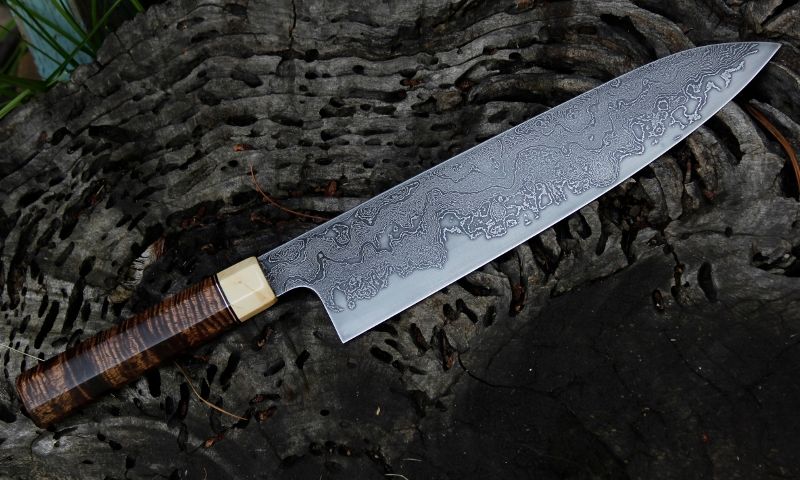As someone who has been making Damascus for 28 years, I can say from a performance standpoint there is no purpose to Damascus or even San Mai blades over a single modern steel blade other than cosmetics. Before modern smelting methods, there was a good reason for it, and having worked small batch smelted ore into steel, I can say that the process makes a significant difference in the finished product.
Having said that I love the process of making Damascus, and seeing the finished product as well.
I am grateful there are so many that do appreciate the quality and craftsmanship that goes into a well made Damascus blade, and so allow me to do what I love to do.
Thanks,
Del





